The oceans occupy 2/3 of the surface of our planet. It is distinguished, among other factors, by the increased salinity of the water. This indicator depends on the content of dissolved substances in 1 kg of liquid. There are more than 50 of them. This indicator is expressed in ppm (‰). This is a tenth of a percent.
The average salinity on the ocean surface is 32-37 ‰. If you go deeper into the habitat of most living beings, then this figure can be fixed at around 34-35 ‰. But not all seas have the same level of the presented indicator. greatly exceeds this level. There are several explanations for this phenomenon. Everyone will be interested to know about them.
General information
Exploring the presented topic, first of all, you need to remember where this reservoir is located between the Arabian Peninsula and Africa. Its length from southeast to northwest is 1932 km. The width of the sea is 280 km. The area of the Red Sea is 460 thousand km².
The average depth is determined at around 437 m, and the deepest place reaches 3039 m. This sea belongs to the Indian Ocean basin, with which it is connected by the narrow Bab el-Mandeb Strait. In the north there is a connection across to the Mediterranean Sea.
The width of the sea communication channel with the Indian Ocean is very small (only about 26-120 km). Therefore, the depression in which the presented reservoir is located is considered the most isolated in the basin. The Red Sea is considered one of the youngest.
Bottom relief
Considering, you should also pay attention to its relief. The shelf is clearly distinguished here. Its width increases from north to south. At a depth of 120-200 m, the shelf turns into a steep ledge of the mainland slope. This is the main chute. It is located at a depth of 500 to 2000 km. 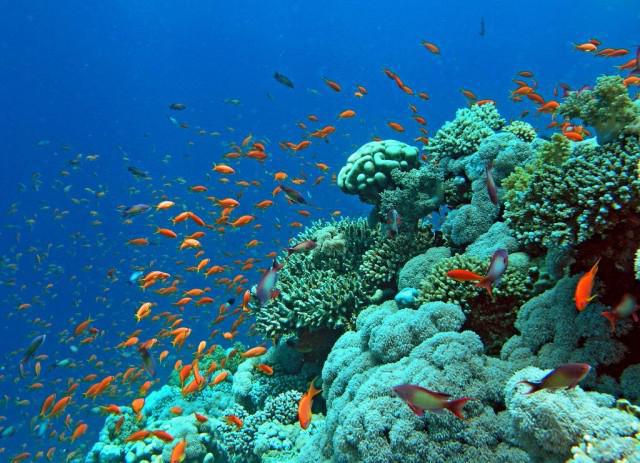
The underwater relief is rich in mountain ranges, ridges and series of steps. A narrow deep fault runs along the axis of the depression. This is an axial groove. In the 1960s, scientists discovered several deep brines in its central part (about 2,000 km deep). Their composition is unique.
The brines appeared as a result of underwater tectonic activity. In more than 15 depressions of the axial trench, many underwater mineral springs with a salinity of more than 250 ‰ have now been discovered. This fact also has a certain effect on the composition of the Red Sea water.
The climate of the reservoir
Peculiar weather conditions also affect salinity of the Red Sea. It is located in a continental tropical climate. Therefore, high air temperatures prevail here, which varies according to the season. 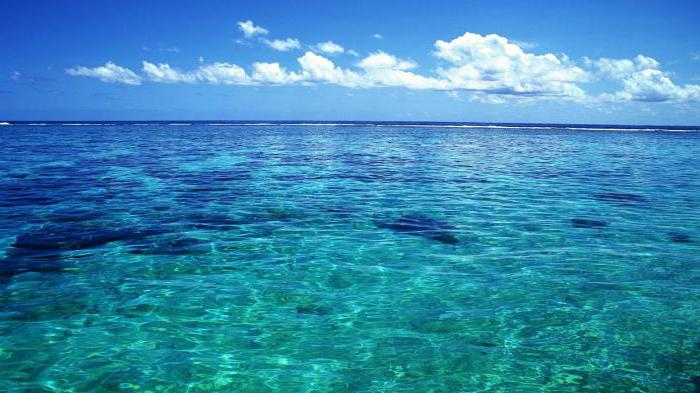
It is somewhat colder over the northern part. In winter, it averages +15 °С here, and +27 °С in summer. In the south, at the same time, this figure reaches +20 °С in January and +32 °С in August.
Precipitation over the sea can be described as low. This figure does not exceed 50 mm per year. Rains most often come in the form of showers. The amount of evaporation per year is about 200 mm. Such a high is also an important factor in increasing salinity.
Storm activity is relatively low. It increases in winter. Most storms occur in the northern part of the reservoir.
Water exchange and hydrocirculation
studying, what explains the high salinity of the Red Sea, it is worth paying attention to its water exchange. This factor also explains the increased salinity levels. It should be noted that not a single river flows into the Red Sea. Water exchange occurs only through the channels of its communication with the Indian Ocean and the Mediterranean Sea. 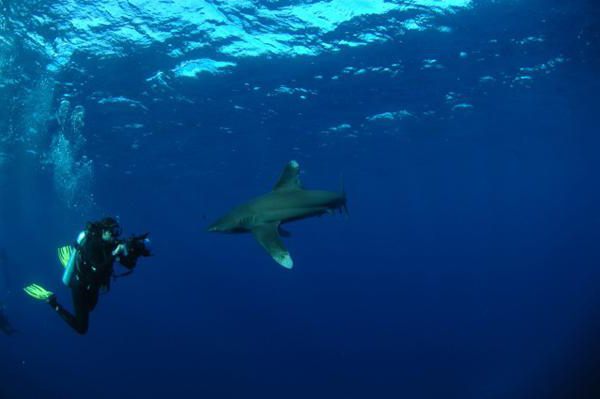
About 1-1.3 thousand km enter through the Bab-el-Mandeb Strait. cube water. This indicator exceeds the volume of water leaving through the rest is spent on evaporation. Also, these waters make up for the negative value of freshwater balance.
This is a closed structure, which is built on the processes of interaction with the atmosphere. The wind forms the summer and winter water circulation. This, in turn, determines the conditions for the flow of water from the Gulf of Aden. These masses affect the upper layers of the reservoir. Due to the current situation, the distribution of hydrological characteristics in the north is fairly even. In the south, a complex structure of water masses arises.
Salinity
It is explained by the processes taking place in it. In the south, due to hydroexchange processes, this figure is lower - 36 ‰. But in the northern regions it reaches 42 ‰.
The waters of the Gulf of Aden are warmer and less saline. They move in the upper layers from south to north. In winter, they meet the colder, saltier waters of the Red Sea. 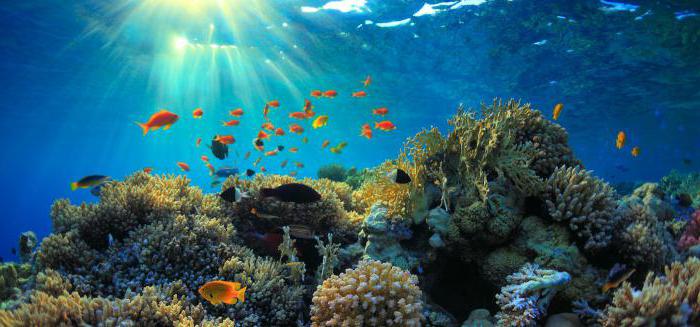
In the intermediate water layer at a depth of 200-500 m, relatively constant salinity and temperature indicators are determined. Both in the north and in the south, this figure is 40-40.5 ‰.
The deep layer is formed in the process of convective movement of water masses. It is determined at a level of 500 m and below. Here the water temperature is quite high. It reaches +22 °С, and its salinity is more than 40 ‰. Deep masses are moving in a southerly direction. Mineral brines are determined in these layers. Their influence on the water layers is still little studied.
convective mixing
It changes as a result of cooling and heating of the masses in winter and summer. This is called convective motion. Heated water has a lower density. It rises, displacing colder and denser masses into the depths.
This process is accompanied by good mixing of water in the sea. Almost at all depths and territories, salinity is characterized by uniformity. Underwater tectonic faults release heat and salt flows in the depths of the sea. Therefore, the reservoir is heated in the bottom areas. It also contributes to the convective mixing of the masses.
The above features of the presented water system explain why the Red Sea is the most saline among all the water bodies of the World Ocean.
Why is the water salty?
As mentioned above, deep water demonstrates the highest salinity of the Red Sea (as a percentage, these masses make up 75 parts of the total volume of the reservoir). This is a pretty high figure. Summarizing all of the above, several reasons for this phenomenon should be noted.
Evaporation from the surface of the water due to the large area of the sea is quite large. At the same time, salts and other chemical elements remain in their place. Only fresh water enters the atmosphere. The hot climate also contributes to increased evaporation. 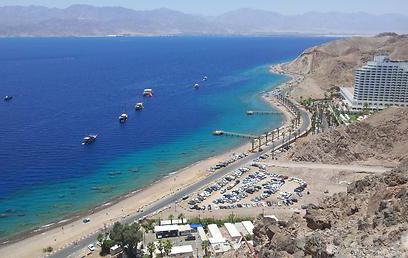
Due to the lack of rivers flowing into the sea, as well as its insufficient communication with other water bodies of the World Ocean, desalination is characterized by a negative indicator.
The amount of precipitation falling into the Red Sea is very low. Therefore, rainwater also cannot desalinate water masses.
How salinity affects water
Unique. Due to the absence of severe storms, rains, river flows, it is characterized by high transparency. Its bright blue hue attracts divers from all over the world.
Unlike the Dead Sea, life is in full swing here. Many fish, mollusks, algae and corals have adapted to such conditions. The diversity of species in the Red Sea is very high. 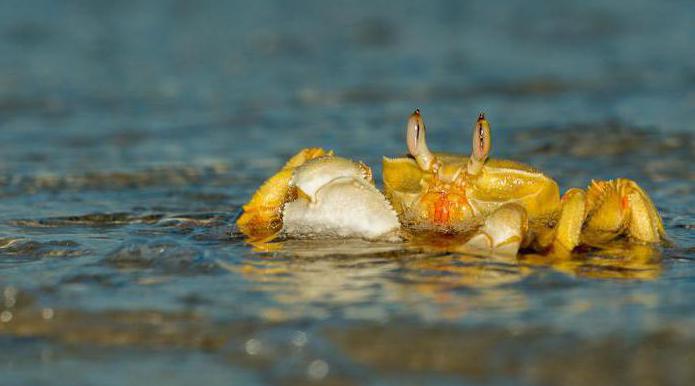
Special climatic conditions allow the sea to maintain almost always constant water temperature and salinity. This allows living organisms to actively develop in these waters.
Forecasts for the future
It will not decrease in the near future, but it may increase over time. This process is very slow. In addition to special climatic and geographical conditions, this feature is influenced by tectonic faults.
Scuba divers descended in They were found, as already mentioned above, brines. Their temperature is constantly rising by 0.3-0.7 °C per year. The activity of these faults is increasing. The Red Sea is not only heated by these mineral springs. It contains water rich in microelements. This contributes to a constant, albeit insignificant, increase in salinity. Although this has no effect on marine inhabitants yet. Thousands of tourists from all over the world come here every year.
Having considered the above facts, one can understand why the salinity of the Red Sea so high. Many factors are causing this. This makes the presented reservoir unique.
